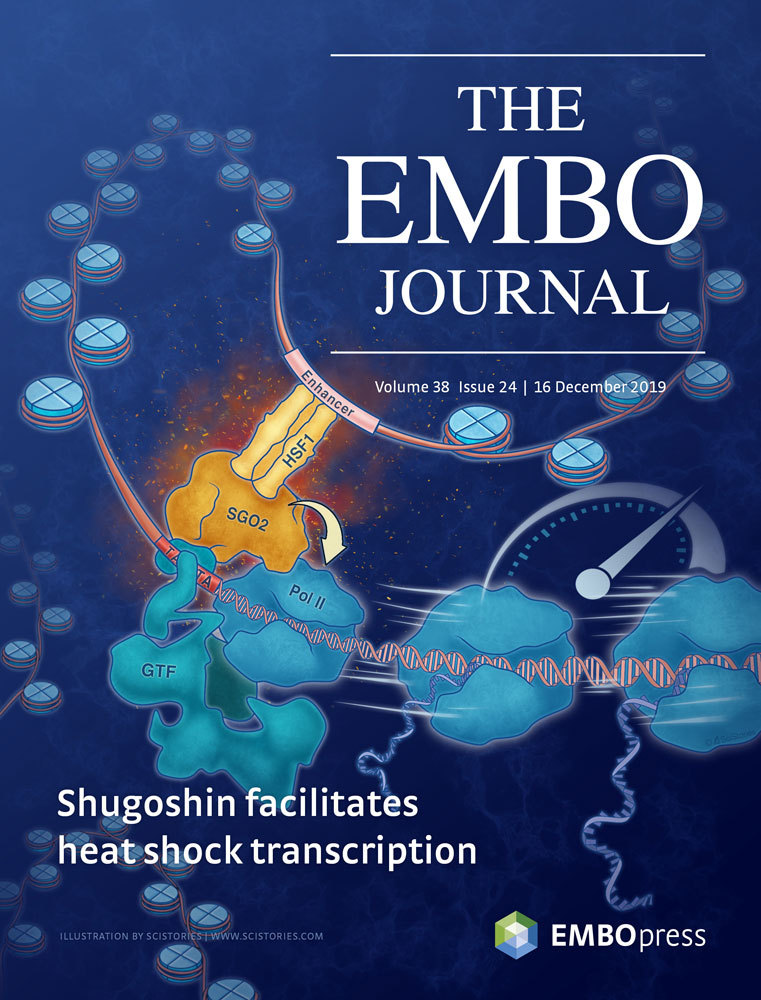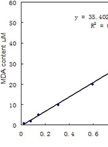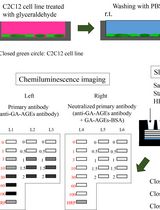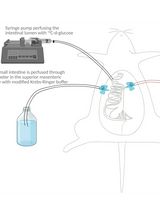- EN - English
- CN - 中文
Single-run HPLC Quantification of Plant Cell Wall Monosaccharides
Single-run HPLC定量分析植物细胞壁单糖
发布: 2020年03月05日第10卷第5期 DOI: 10.21769/BioProtoc.3546 浏览次数: 4985
评审: Amey RedkarGongjun ShiRenate WeizbauerAnonymous reviewer(s)
Abstract
The plant cell wall is a complex network of polysaccharides and proteins that provides strength and structural integrity to plant cells, as well as playing a vital role in growth, development, and defense response. Cell wall polysaccharides can be broadly grouped into three categories: cellulose, pectins, and hemicelluloses. Dynamic interactions between polysaccharides and cell wall-associated proteins contribute to regions of flexibility and rigidity within the cell wall, allowing for remodeling when necessary during growth, environmental adaptation, or stress response activation. These polysaccharide interactions are vital to plant growth, however they also contribute to the level of difficulty encountered when attempting to analyze cell wall structure and composition. In the past, lengthy protocols to quantify cell wall monosaccharides contributing to cellulose as well as neutral and acidic cell wall polysaccharides have been used. Recently, a streamlined approach for monosaccharide quantification was described. This protocol combines a simplified hydrolysis method followed by several runs of high-performance anion-exchange chromatography with pulsed amperometric detection (HPAEC-PAD). Here, we present an updated version of this protocol in which we can analyze all nine cell wall monosaccharides in a single high-performance liquid chromatography HPAEC-PAD gradient profile. The inclusion of an enzymatic starch degradation, as well as alternate internal standards for added quantification accuracy, and a ready-to-use Python script facilitating data analysis adds a broadened scope of utility to this protocol. This protocol was used to analyze Arabidopsis light-grown seedlings and dark-grown hypocotyls, but is suitable for any plant tissues.
Keywords: Cell wall (细胞壁)Background
Understanding plant cell wall structure and composition have been at the forefront of both academic and industrial plant research for many years. Polysaccharide and cell wall protein interactions provide structure to plant cells, while also actively playing important biological roles during growth and adaptation to diverse external conditions (Cosgrove, 2005 and 2016; Kesten et al., 2017). The plant cell wall acts as an important physical barrier during biotic or abiotic interactions, but can also provide an endogenous source of signaling molecules released during stress response (Cosgrove, 2005 and 2016; Kesten et al., 2017 and 2019). These cell wall-derived molecules can activate signaling cascades to alert the plant host of an invading pathogen or a need to redirect growth resources. Cell wall polysaccharides are also important for industrial uses–pectins are widely used in the food and cosmetics industries, while cellulose is important for the food, paper, and textile industries (Pettolino et al., 2012). As such, efficient and informative methods for characterizing plant cell wall polysaccharides are vital in both academia and industry to further understand the biological role of the plant cell wall and improve ease of polymer extraction while reducing waste during industrial applications.
Experiments from the 1940s conducted in wood established the use of dilute acid hydrolysis at high temperature to study sugar decomposition into monomers (Saeman, 1945). Such studies have provided a foundation for many current protocols, including the one presented here. Streamlining this analysis has allowed us to improve both the accuracy and efficiency of our measurements. Other recently described protocols have established the combination of the widely-used trifluoroacetic acid (TFA) hydrolysis approach with a single HPLC run, or a dual sulfuric acid-based h ydrolysis method, referred to as a “one-step two-step sulfuric acid hydrolysis” approach, with multiple HPAEC-PAD runs (Zhang et al., 2012; Voiniciuc et al., 2016; Yeats et al., 2016a and 2016b). This “one-step two-step” approach makes use of a Saeman hydrolysis procedure followed by what has been previously referred to as a “matrix hydrolysis” (Yeats et al., 2016a). Saeman hydrolysis, the “two-step” portion of this approach, is essentially the addition of concentrated sulfuric acid hydrolysis (72% sulfuric acid) directly to plant material in order to swell the sample. After one hour at room temperature, water is added to the sample to dilute the sulfuric acid concentration to 4%. This portion of the hydrolysis is then performed at 121 °C for one hour. The use of a dilute acid hydrolysis immediately following a strong acid swelling hydrolysis allows the release of glucose from all possible sources, including heavily cross-linked and rigidly packed cell wall components, such as crystalline cellulose. The “one-step” portion of the hydrolysis, also called the “matrix hydrolysis”, refers to the hydrolysis of samples only at 121 °C with 4% sulfuric acid. By simply treating samples with a “matrix hydrolysis”, only monosaccharides from easily hydrolysable sources will be released. Therefore, the difference between these two hydrolyses allows the quantification of crystalline cellulose in what is referred to as a “one-step two-step” hydrolysis approach. In our protocol, we combine the efficient “one-step two-step” sulfuric acid hydrolysis described by Yeats et al. (2016a) with the inclusion of an optional enzymatic starch degradation and the use of alternate internal standards to elute all cell wall sugars and quantify glucose derived from crystalline cellulose in a single HPAEC-PAD run. Our additions to the previously mentioned protocols contribute significant improvements in both ease and accuracy of monosaccharide measurement that will greatly benefit the field of plant cell wall research.
Materials and Reagents
- 2 ml screw-cap tubes (Sarstedt, catalog number: 72.694.006 )
- 50 ml conical tubes (Greiner Bio-One, catalog number: 7.210 261 )
- 500 μl autosampler Snap Ring vials (Sigma, catalog number: 27422 )
- Autosampler vial lids (Sigma, catalog number: 24757 )
- Stainless steel 25 ml grinding jars (Retsch, catalog number: 02.462.0119 )
- Stainless steel 12 mm grinding balls (Retsch, catalog number: 05.368.0032 )
- Tin weigh boats, 5 x 9 mm (Santis Analytical AG, catalog number: SA76981103 )
- 0.22 μm sterile PES-membrane filter (Life Systems Design AG, catalog number: 99255 )
- Metal spatula
- Plastic weighing papers (HuberLab, catalog number: 12.9702.080 )
- Conical tubes (Grenier Bio, catalog number: 7.210 261 )
- Nylon mesh, 60 μm pore size (Sefar Nitex, catalog number: 3A03-0060-110-00 )
- Square Petri plates (Greiner Bio-One, catalog number: 7.688.102 )
- Homogenizing beads (depending on amount of material):
- Small glass beads (2.85-3.45 mm beads, Roth, catalog number: A557.1 )
- Large metal balls (12 mm beads, Retsch, catalog number: 05.368.0032 )
- CarboPac PA20 column (3 x 150 mm, Thermo Fisher Scientific, catalog number: 0 60142 )
- CarboPac PA20 guard column (3 x 30 mm, Thermo Fisher Scientific, catalog number: 0 60144 )
- Arabidopsis thaliana
- Ethanol (HCI Shop, ETH Zurich, catalog number: 0 2000107 )
- Chloroform (Sigma, catalog number: 25693 )
- Methanol (HCI Shop, ETH Zurich, catalog number: 0 2000342 )
- Acetone (Sigma, catalog number: 24201-4X2.5L-GL-R )
- (Optional) Enzymatic starch degradation
- Amyloglucosidase (Sigma, catalog number: 10102857001 )
- α-Amylase (Sigma, catalog number: 10102814001 )
- Sulfuric acid (Sigma, catalog number: 258105 )
- Ultrapure water (Milli-Q or equivalent)
- Monosaccharide analysis standards:
- L-fucose (Sigma, catalog number: F2252-5G )
- D-glucose (Sigma, catalog number: G7528-1KG )
- D-galactose (Sigma, catalog number: 48260 )
- D-xylose (Sigma, catalog number: W360600-SAMPLE )
- D-mannose (Sigma, catalog number: 63579 )
- L-arabinose (Roth, catalog number: 5118.2 )
- L-rhamnose (Sigma, catalog number: W373011-SAMPLE-K )
- D-galacturonic acid monohydrate (Sigma, catalog number: 48280 )
- D-glucuronic acid (Sigma, catalog number: G5269-10G )
- (Optional) Alternate internal standards
- Sodium hydroxide, 50% solution in water (Sigma, catalog number: 415413 )
- Sodium acetate, anhydrous (Sigma, catalog number: 32319-1KG-R )
- Lugol solution (Sigma, catalog number: 32922-6X1L )
- Liquid nitrogen
Equipment
- Freeze-dryer (Christ, Alpha 2-4)
- Microcentrifuge (Eppendorf, model: 5424 R )
- Sample concentrator (Stuart, model: SBHCONC/1 )
- Autoclave-compatible rack (Karter Scientific, catalog number: 125A7 )
- Microbalance (Mettler Toledo MX5)
- Tissue homogenizer (Retsch MM200)
- Micro-centrifuge tube shaker (Eppendorf ThermoMixer F1.5)
- Tube rotator (Labinco LD79, catalog number: 79000 )
- Speed-vacuum centrifuge (Eppendorf Concentrator Plus)
- Autoclave (Thermo Fisher Scientific, Sterico, Varioklav)
- Heating block (Stuart, model: SBH130D )
- Autosampler (Dionex, model: AS-1 )
- Dionex ICS-5000 (Dionex, model: DC-5 )
- ED Electrochemical Detector (without cell, product number: 072042)
- ED Cell (no reference or working electrode, product number: 072044)
- Gold (Au) on Polytetrafluororethylene (PTFE) Disposable Electrode (product number: 066480)
Software
- Chromeleon 8 (Thermo Fisher Scientific)
Available for a fee at https://www.thermofisher.com/order/catalog/product/CHROMELEON7 - Microsoft Excel
Available for a fee at https://www.office.com - GraphPad Prism
Available for a fee at https://www.graphpad.com - Spyder5 (Anaconda3)
Freely available at https://www.anaconda.com - Python 3.6
Freely available at https://www.python.org
Procedure
文章信息
版权信息
© 2020 The Authors; exclusive licensee Bio-protocol LLC.
如何引用
Menna, A., Fischer-Stettler, M., Pfister, B., Sancho Andrés, G., Holbrook-Smith, D. and Sánchez-Rodríguez, C. (2020). Single-run HPLC Quantification of Plant Cell Wall Monosaccharides. Bio-protocol 10(5): e3546. DOI: 10.21769/BioProtoc.3546.
分类
植物科学 > 植物生物化学
生物化学 > 糖类 > 葡萄糖
您对这篇实验方法有问题吗?
在此处发布您的问题,我们将邀请本文作者来回答。同时,我们会将您的问题发布到Bio-protocol Exchange,以便寻求社区成员的帮助。
Share
Bluesky
X
Copy link













